Growing Burdock is easy and grows almost like a weed in zones with favorable growing conditions. Let’s have a look at How to Grow Burdock in detail!
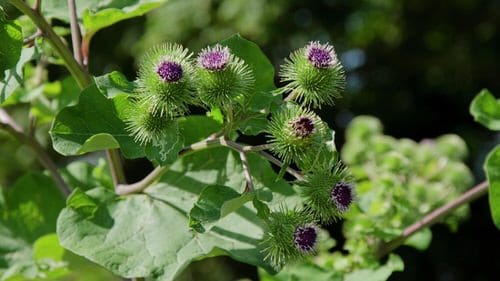
Burdock (Arctium Lappa) is a beautiful ornamental herb with medicinal properties. In the kitchen, its young leaves are used raw in salads or cooked like spinach. As for the roots and flower spike, they taste like artichoke and are used in various oriental cuisines. If you too want to try it, then here’s all you need to know about How to Grow Burdock!
USDA Zones – 3-9
Difficulty – Easy
Other Names: Arctium, Arctium lappa, Arctium minus, Arctium tomentosum, Bardana, Bardana-minor, Bardanae Radix, Bardane, Bardane Comestible, Bardane Géante, Bardane Majeure, Beggar’s Buttons, Burdock Root Extract, Burr Seed, Clotbur, Cocklebur, Cockle Buttons, Edible Burdock, Fox’s Clote, Gobo, Glouteron, Hardock, Harebur, Herbe du Teigneux, Lappa, Niu Bang Zi, Thorny Burr.
What is Burdock?
Burdock is native to Europe and parts of Asia. The herb is widely used for centuries to treat digestive issues and thanks to its medicinal properties, the plant is getting quite popular.
It is rich in antioxidants, helps in lowering down sugar and blood pressure, and can also be used to treat the common cold, and sore throat.
How to Grow Burdock?
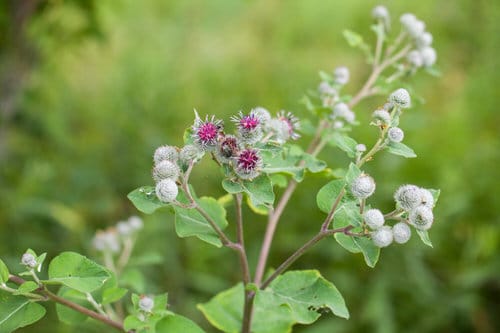
Planting can be done in spring in cool and temperate regions. In warm climates, sow seeds in the fall.
- Sow seeds in a seed tray or directly on the ground.
- Add a lot of aged manure or compost decomposed and clean the weeds and debris around the planting area.
- Transplant the seedlings to their final location by providing a spacing of about 20 cm between each.
- Avoid growing the plant in the pot because of its deep roots.
Requirements for Growing Burdock (Gobo)
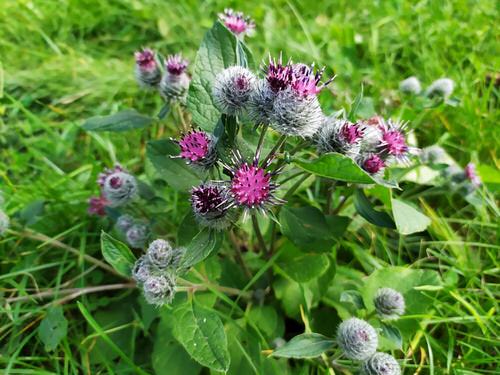
Position
Growing burdock is better in a location that remains partially shaded. It grows well in areas with mild winter. The ideal growing temperature remains between 50 – 77 F (10 C – 25 C).
Soil
Cultivate preferably in light, deep, well-drained, and fertile soil that is rich in organic matter. This plant tolerates a soil pH in the range of 4.6 – 7.8, but a pH of 6.6 to 7.5 is better.
Watering
Water moderately and avoid overwatering the plant at all costs. Keep the soil slightly moist but avoid keeping the soil waterlogged.
Taking Care of Burdock
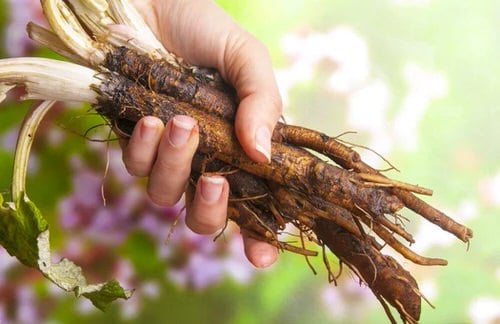
Burdock can become an invasive plant. To prevent it from spreading, cut the flowers before they fade to prevent seeding and seed spilling. Another way to counter its invasiveness is to grow burdock in confined space.
Mulching
Mulch at the base to keep the soil moist and fresh and avoid the growth of weeds.
Fertilizer
Budock is an aggressive plant that does not necessarily need fertilizer. To give plant a boost it can be fertilized occasionally with balanced fertilizer.
Pests and Diseases
Burdock is resistant to pests and diseases but can be attacked by slugs. Use coffee grounds and eggshells as natural barrier against slugs.
Harvesting Burdock
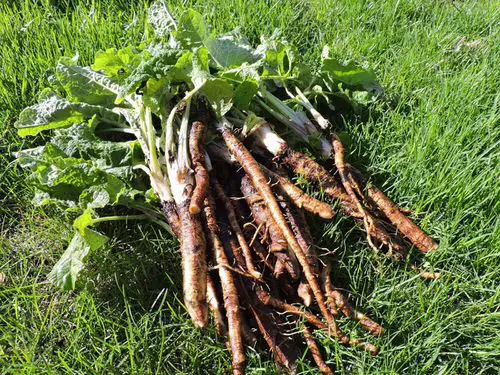
Harvesting of the burdock or gobo roots can be done in 8-10 weeks after planting but these can be left in the soil for growing longer. Burdock leaves are harvested from June to September or as and when required.
Burdock Root Benefits
- The roots of this herb are a rich source of antioxidants like luteolin, phenolic acids, and quercetin.
- As the roots have anti-inflammatory and antibacterial properties, they can be used to treat many skin-related problems.
- Regular consumption also promotes the purification of blood.
Do make sure that you are eating the roots in smaller quantities as too much consumption may have an ill effect on your health. Pregnant women must avoid its consumption.


